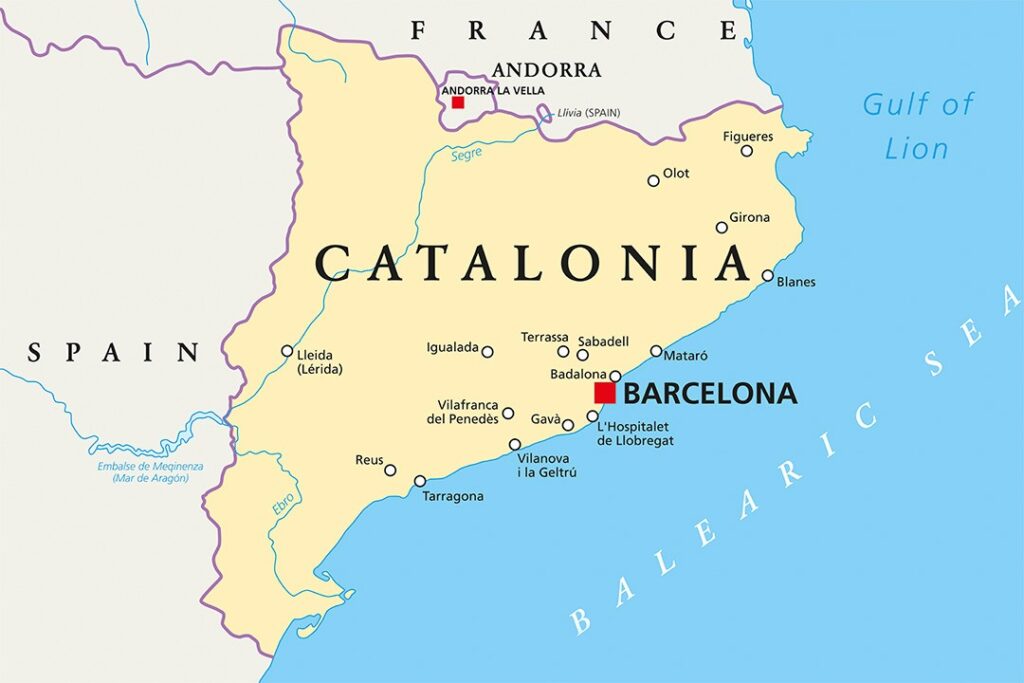
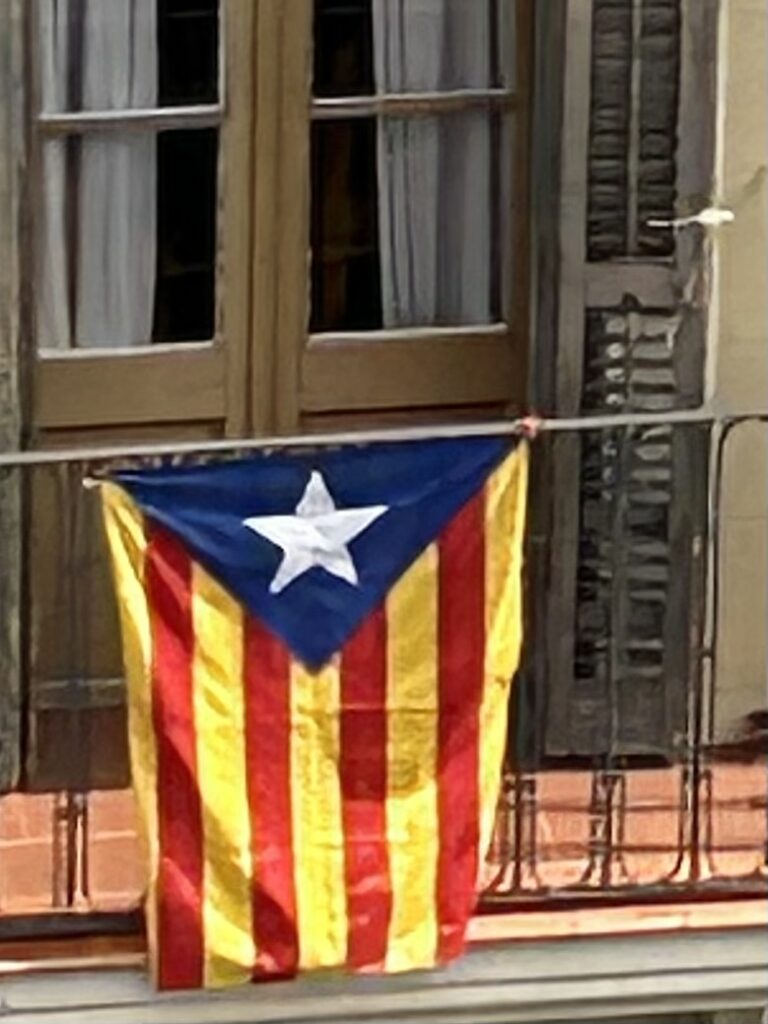
We finally arrived in Barcelona and were cleared to leave the ship at 1:30. Our cab took us to the hotel which is just 2 blocks from Sagrada Familia. It was a perfect location. After unpacking, we strolled around the area and had tapas at a recommended restaurant a few blocks away. From the rooftop, we could see the spires of Sagrada Familia and several Catalan Independence flags hanging from balconies. This Catalan flag is called the Blue Estelada, translated as starlit flag or starry flag.
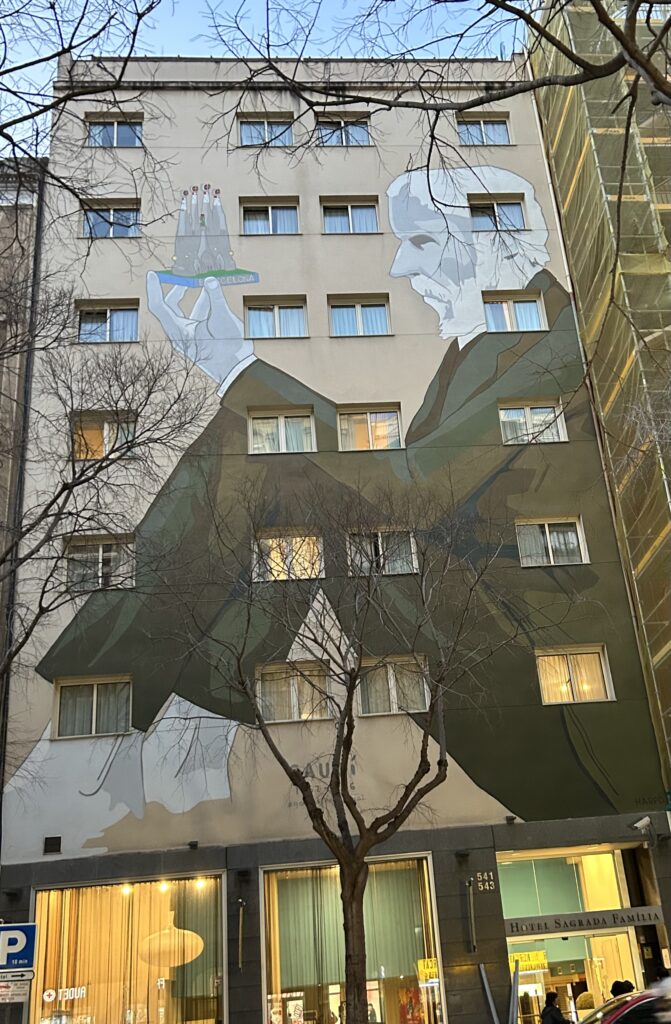
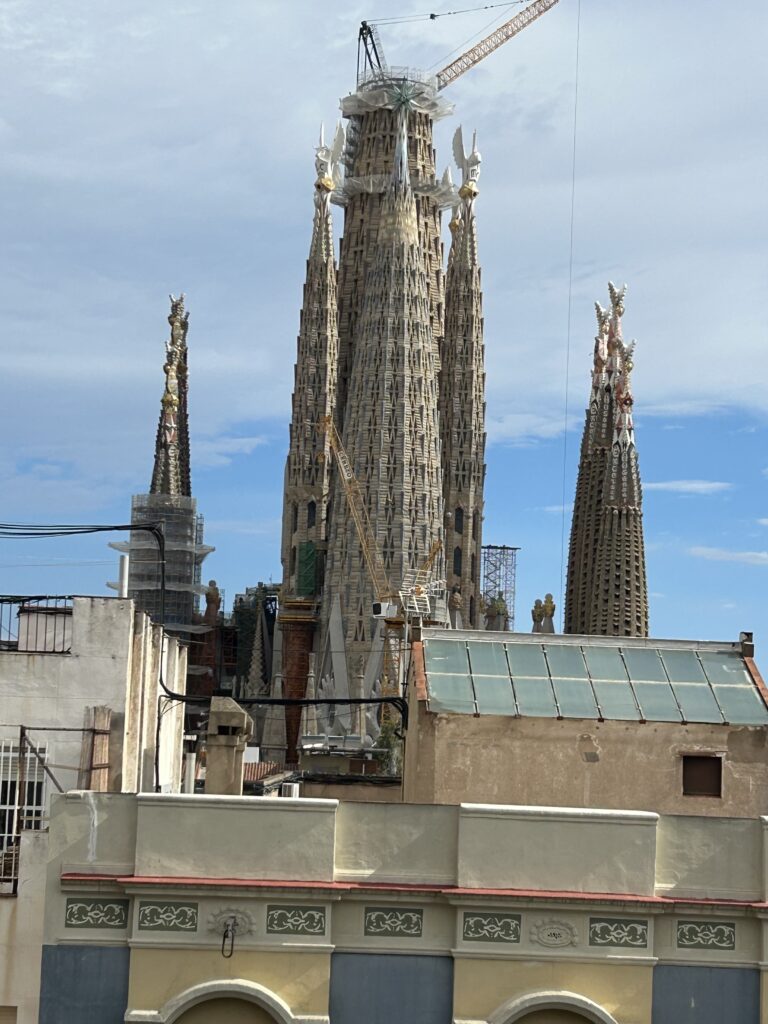
Barcelona is Spain’s major Mediterranean port. It is located on the Iberian Peisula on the Mediterranean Sea. Its area is restricted by natural boundaries: To the South lie the Collserola Mountains, to the southwest, the Llobregat River and to the north the Besos River.
Barcelona has an interesting history, stemming from the first settlements in Neolithic times. The city was founded by the Romans at the end of the first century BCE. Parts of its defensive wall from that era are still visible in the Gothic Quarter. The city has been ruled by Muslims, the Carolingian Empire, Bourbons, and others. It was anti Franco during his rule. In the late 1970’s, the Catalan language was officially recognized, and cultural life was revitalized.


Today, Barcelona has two official languages: Spanish and Catalan. Catalan is the institutional language of the region and the language used for all the official bodies of authority and government there. Catalan is spoken at home, in school, and at work. Students are taught in Catalan, and Spanish is a subject to be studied. Because Spanish is the official language of Spain, most people in Barcelona are at least bilingual..
Tuesday was our day reserved for Sagrada Familia. Words and my pictures cannot do justice to this great masterpiece designed by Antoni Gaudí. From 1883 until his death in 1926 Gaudi devoted his life to this church. 140 years after laying the cornerstone the church is still not finished. Gaudí’s response was: “The patron of this project is not in a hurry.” Gaudí’s vision was to use visual symbolism to express the many mysteries of Christianity.
Overhead 18 huge towers reach to the heavens. Each represents a Biblical figure: The twelve apostles, the four Evangelists, the Virgin Mary, and Jesus. Together with the tower of the Virgin Mary, five of the six central towers have been completed. The central tower of Jesus Christ is scheduled for completion in next year.
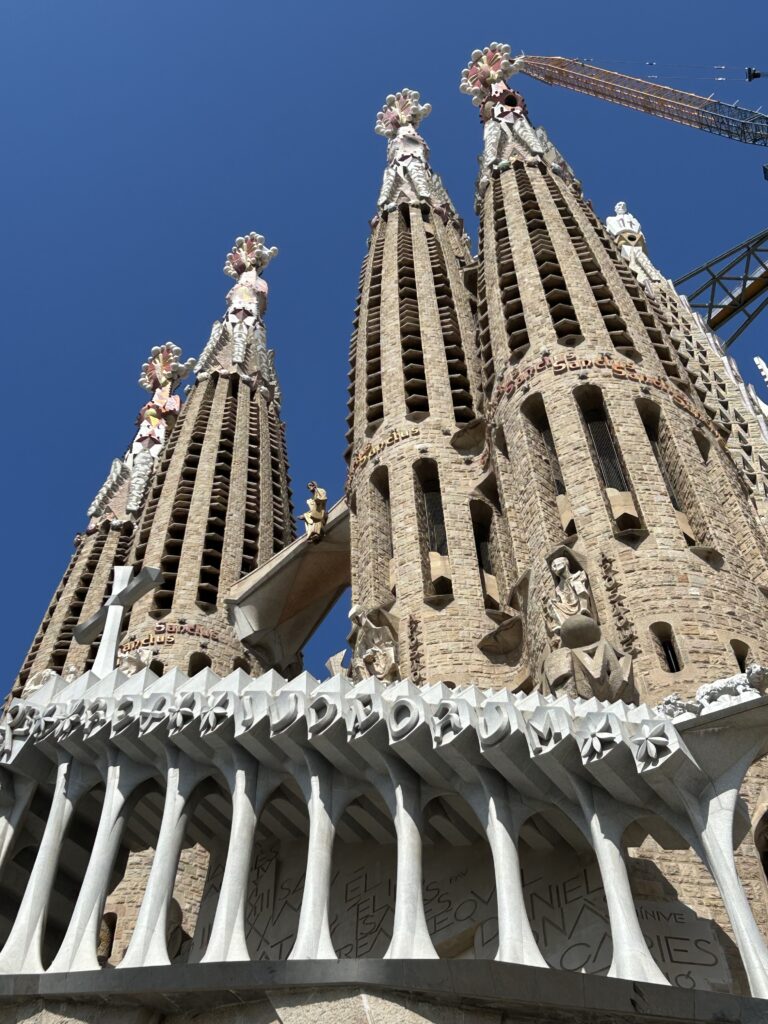
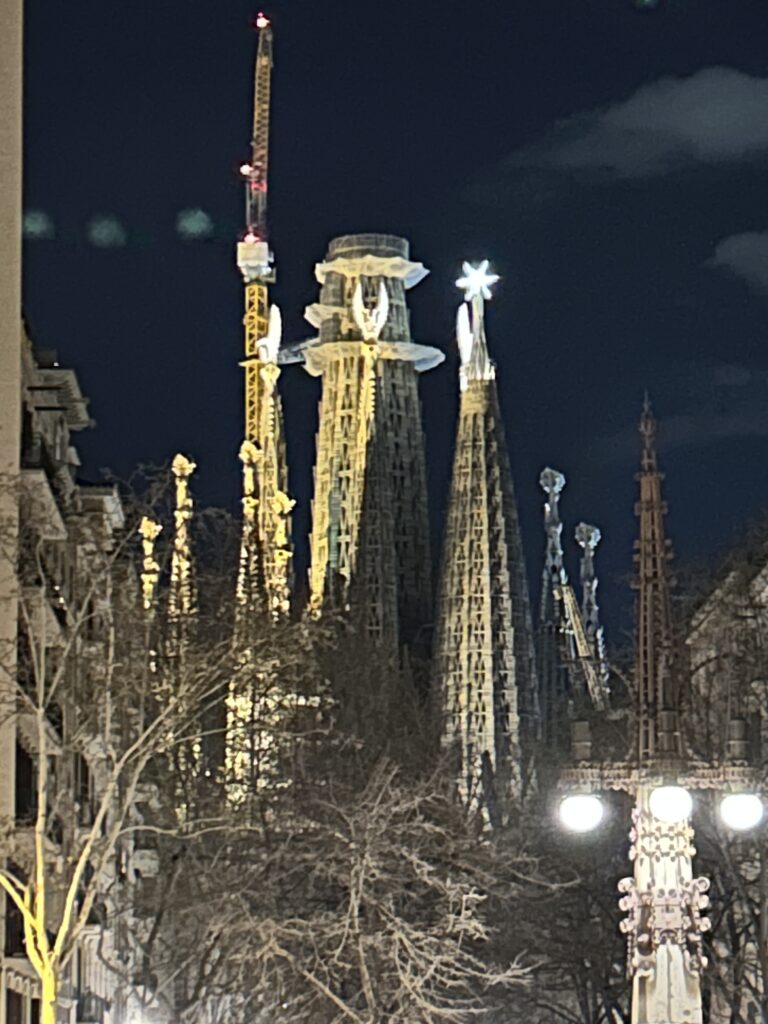

The one side of the Basilica that was completed in Gaudi’s lifetime–the Eastern side–is the façade of hope or the Nativity façade. Here the sculptures depict the life of Christ from his birth to resurrection. This was completed during Gaudí’s life.

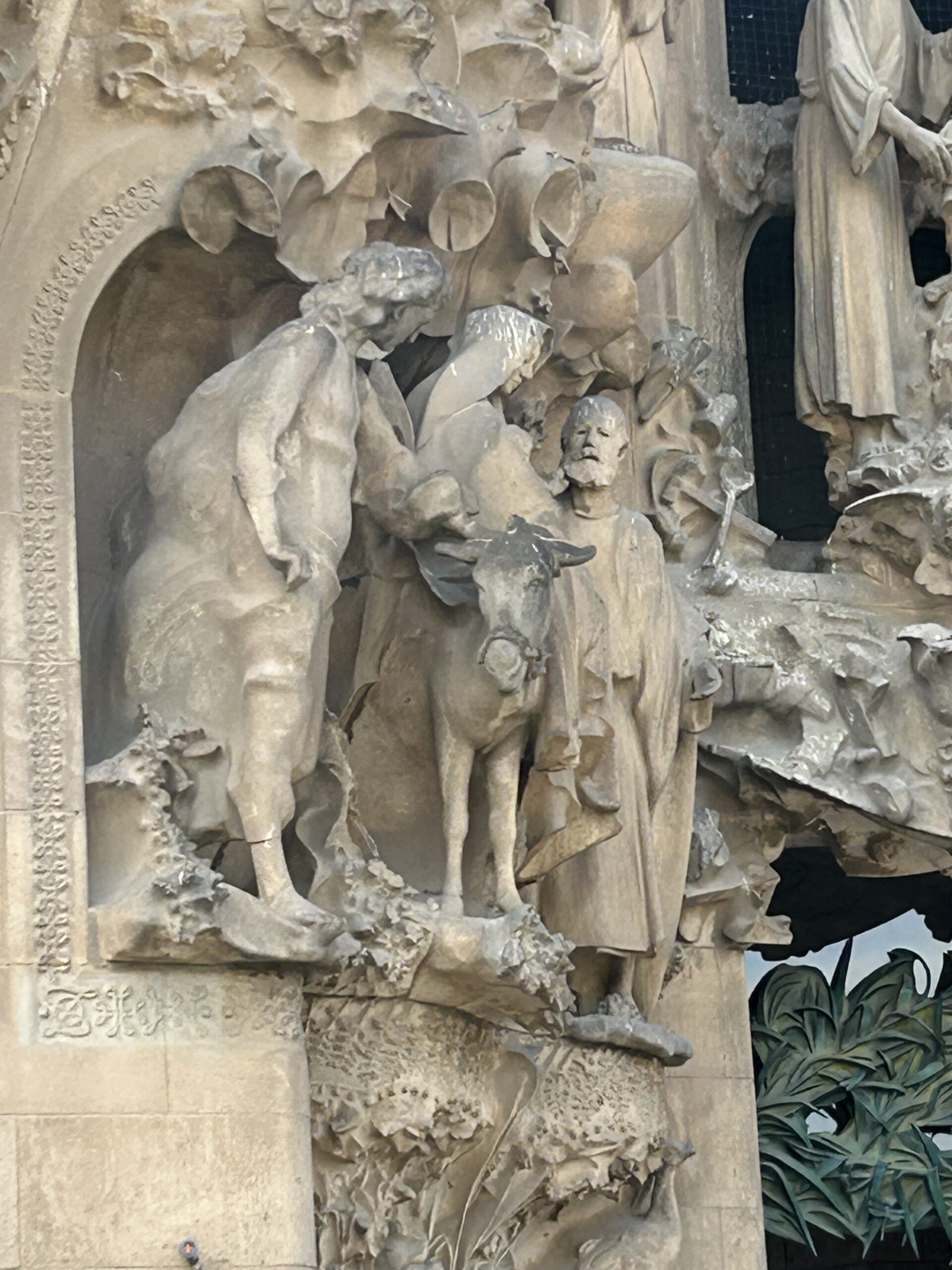

The opposite side—the Western Side—is the passion façade. It conveys the suffering and death of Jesus. Sculptures include the The Last Supper, Passion, and Crucifixion. This is a darker side. One interesting sculpture is Veronica’s scarf that has Christ’s face on it. It has a sort of perspective shift: The eyes of the face seem to follow you when you move.
The main entrance, to the south, is yet to be completed This is the Glory façade, showing how people can celebrate divine glory. Its door has the entire Lord’s Prayer in Catalan and then the phrase “Give us this day our daily bread” in 50 languages.
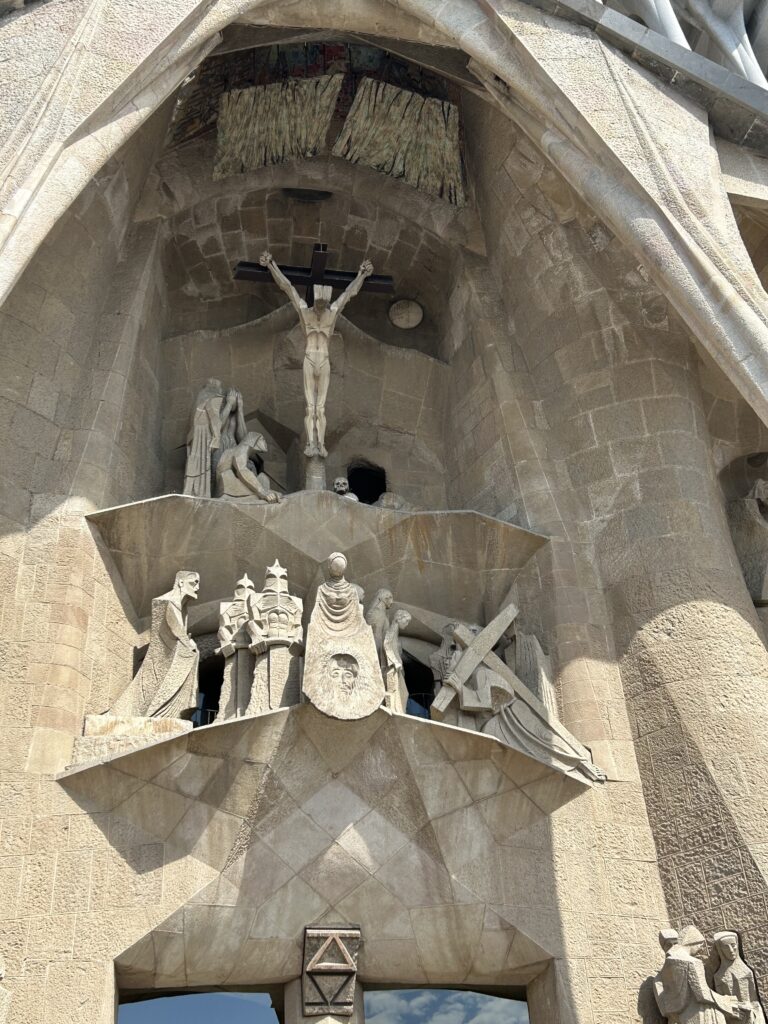
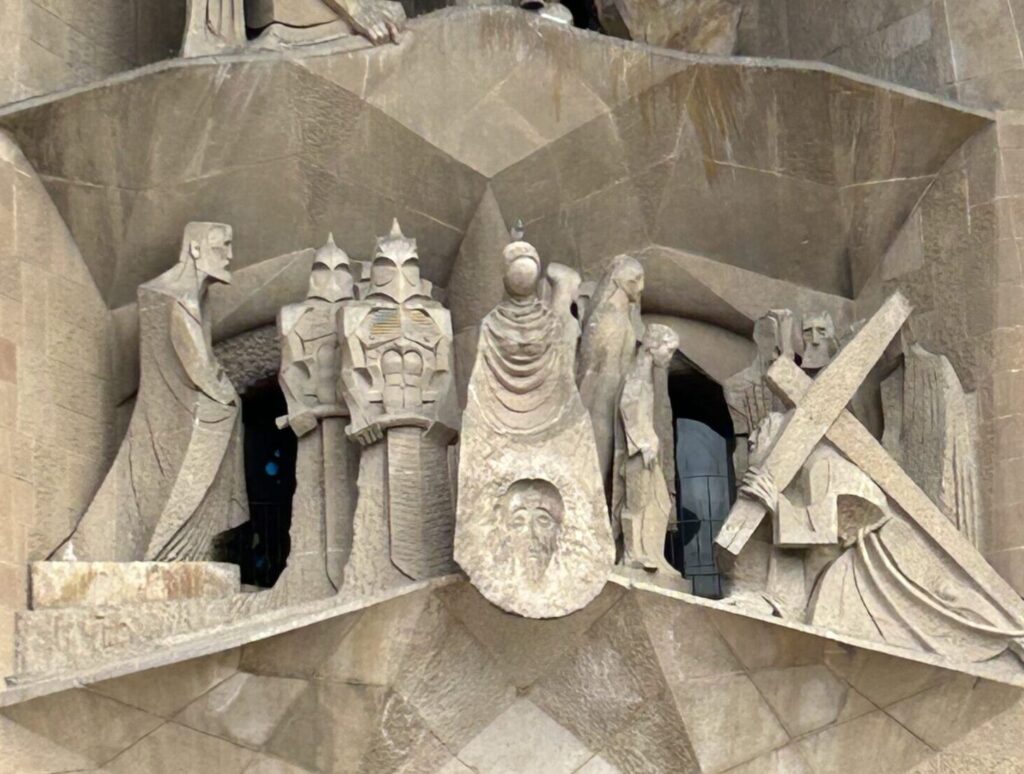
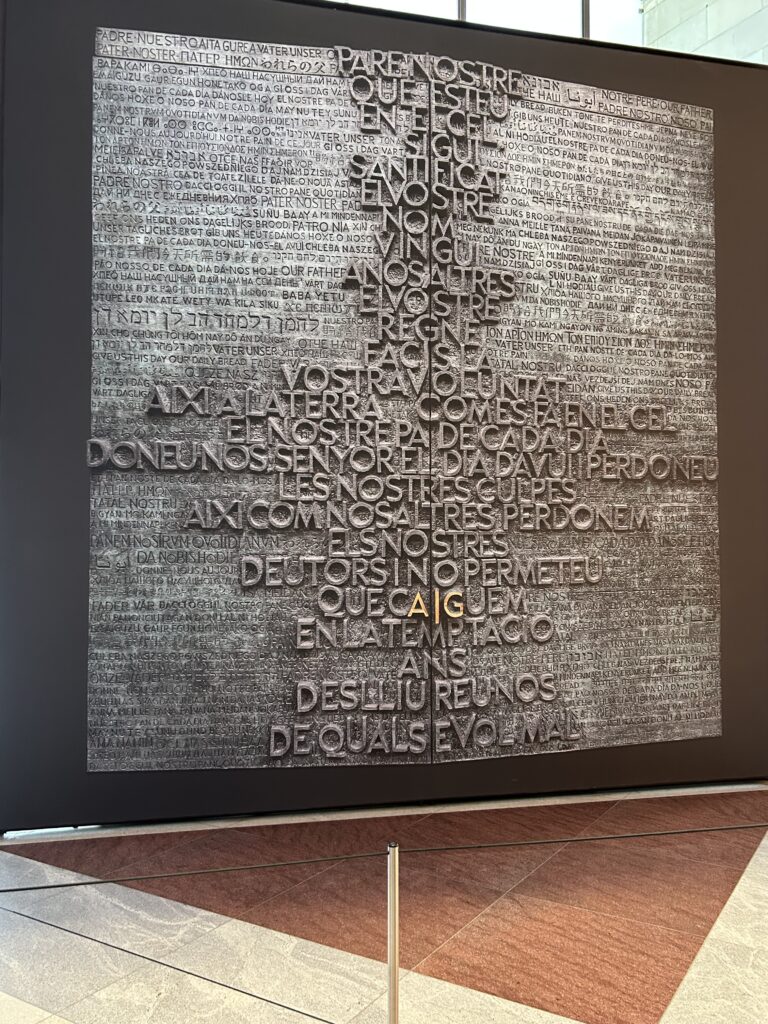
The inside is just as striking. The basilica has a cruciform shape with a long nave crossed with a transept. The nave vaults are 246 ft. high; while the side vaults are 98 ft. high.The beautiful stained glass windows bathe the nave with rainbow-colored light. Above the altar, which is a block of porphyry from Iran, an expressionist crucifix hangs from a large canopy. This is a bronze version of work by Carlos Maní.
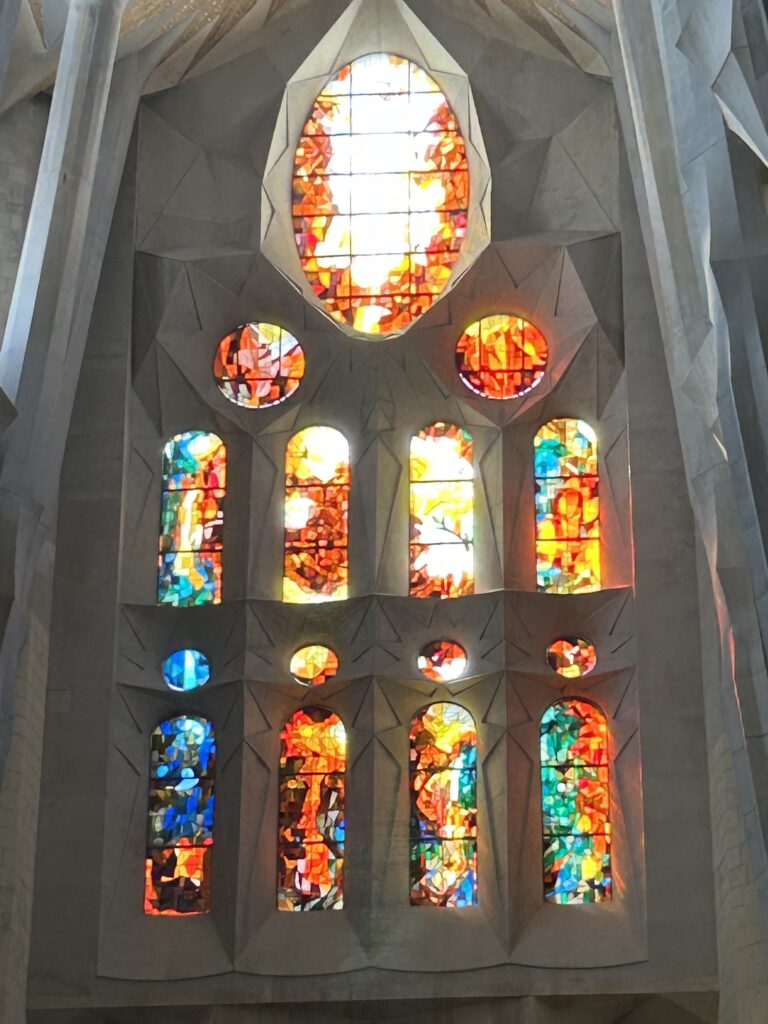


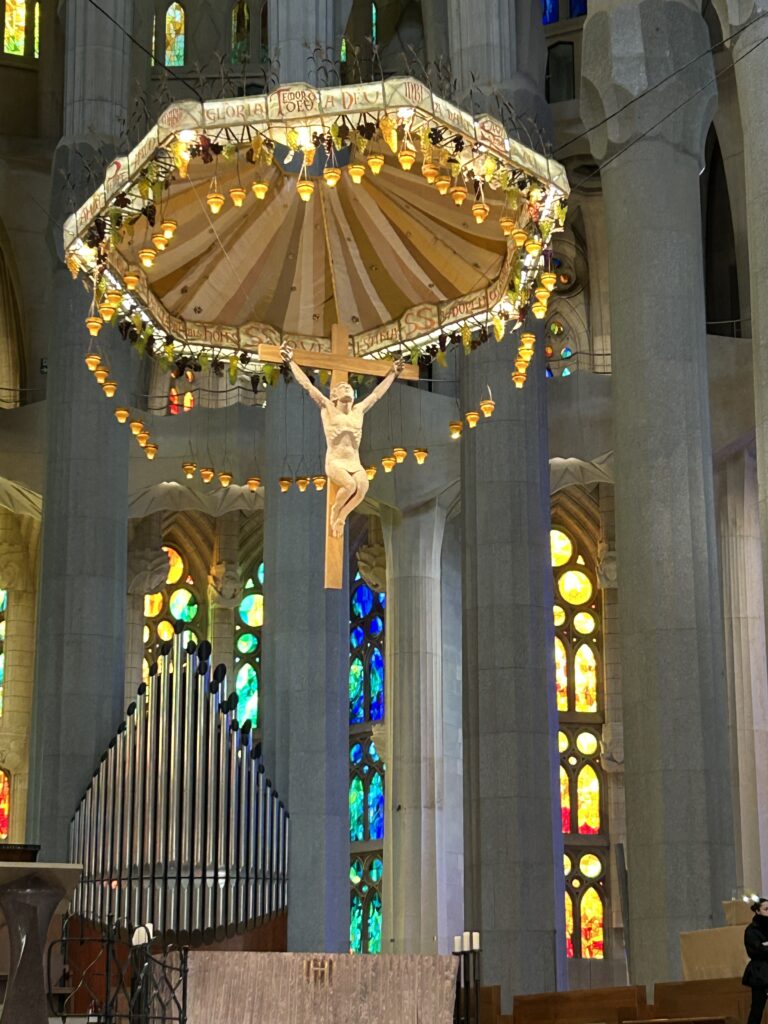
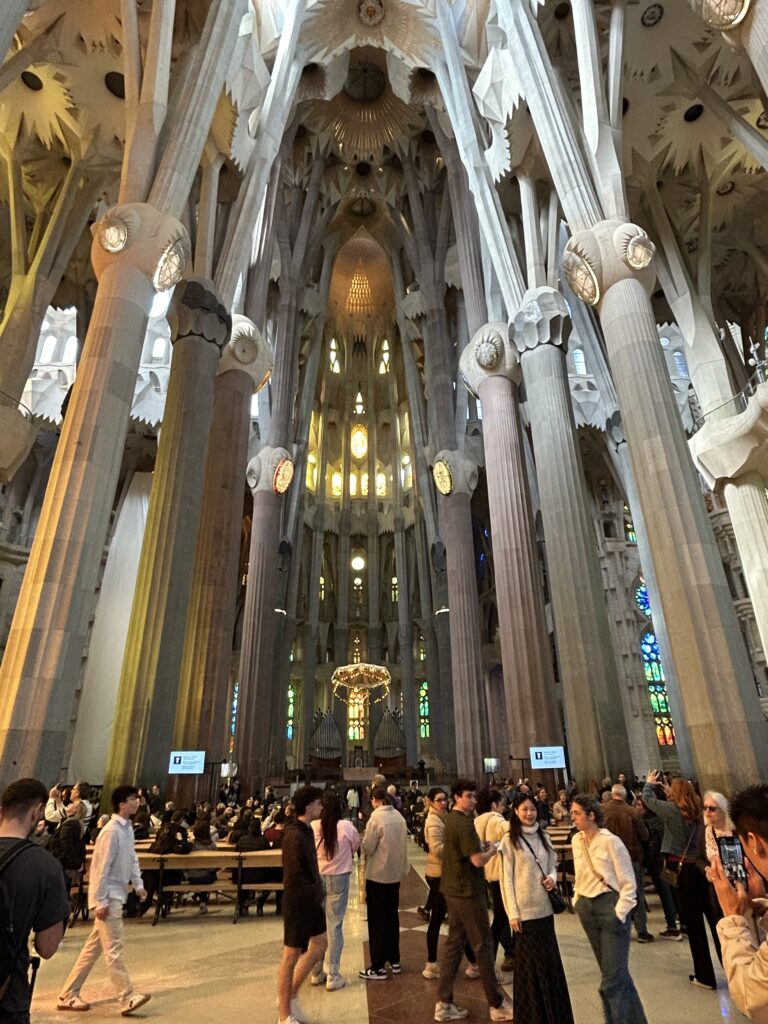
It is a spiritual experience to visit this magnificent basilica, which is a working church with several daily masses.
Barri Gòtic and the Cathedral
The Barri Gòtic or Gothic Quarter is in the oldest part of the city. It dates back to the Roman Barcino, the settlement founded in 15 BCE. Many buildings date from medieval times. There are so many plazas to see. Plaça de la Seu was our first stop. There sits the Barcelona Cathedral. dedicated to Eulalia of Barcelona: co-patron saint of the city. It towers above this district and can be seen for a great distance. The Gothic cathedral’s construction began in the late 13th century, though it wasn’t completed until the mid-15th century. It was said to have been an inspiration for Gaudi. The sides of the nave are filled with chapels dedicated to various saints. The gold furnishings of the chapels, the stained glass, and baroque altarpieces are stunning. It also has a cloister with a pond and geese. It was a beautiful and sacred place. After visiting the Cathedral, we wandered the narrow streets filled with plazas and restaurants. I felt like I was stepping back in time as we wandered the streets and found hidden courtyards.
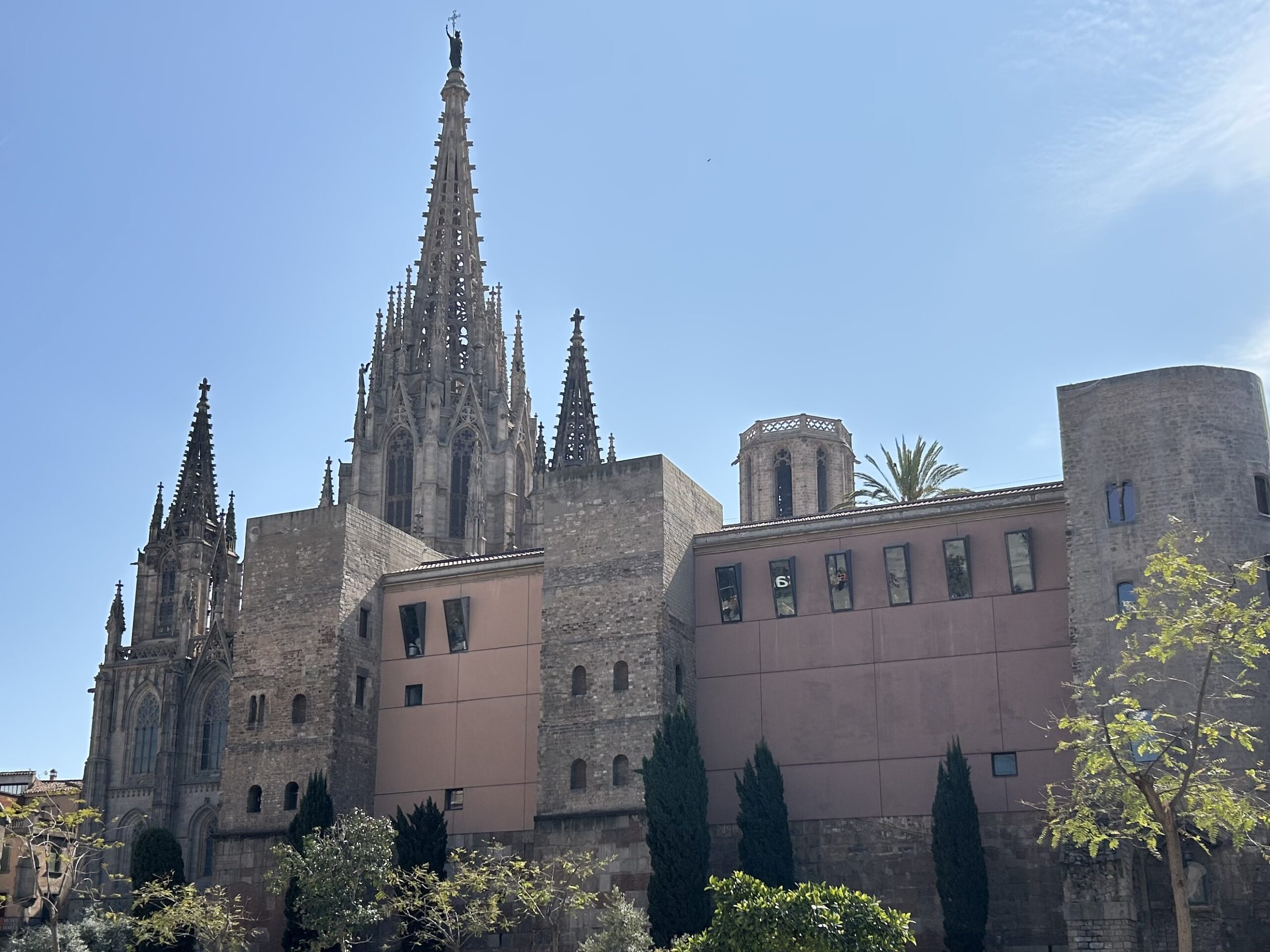
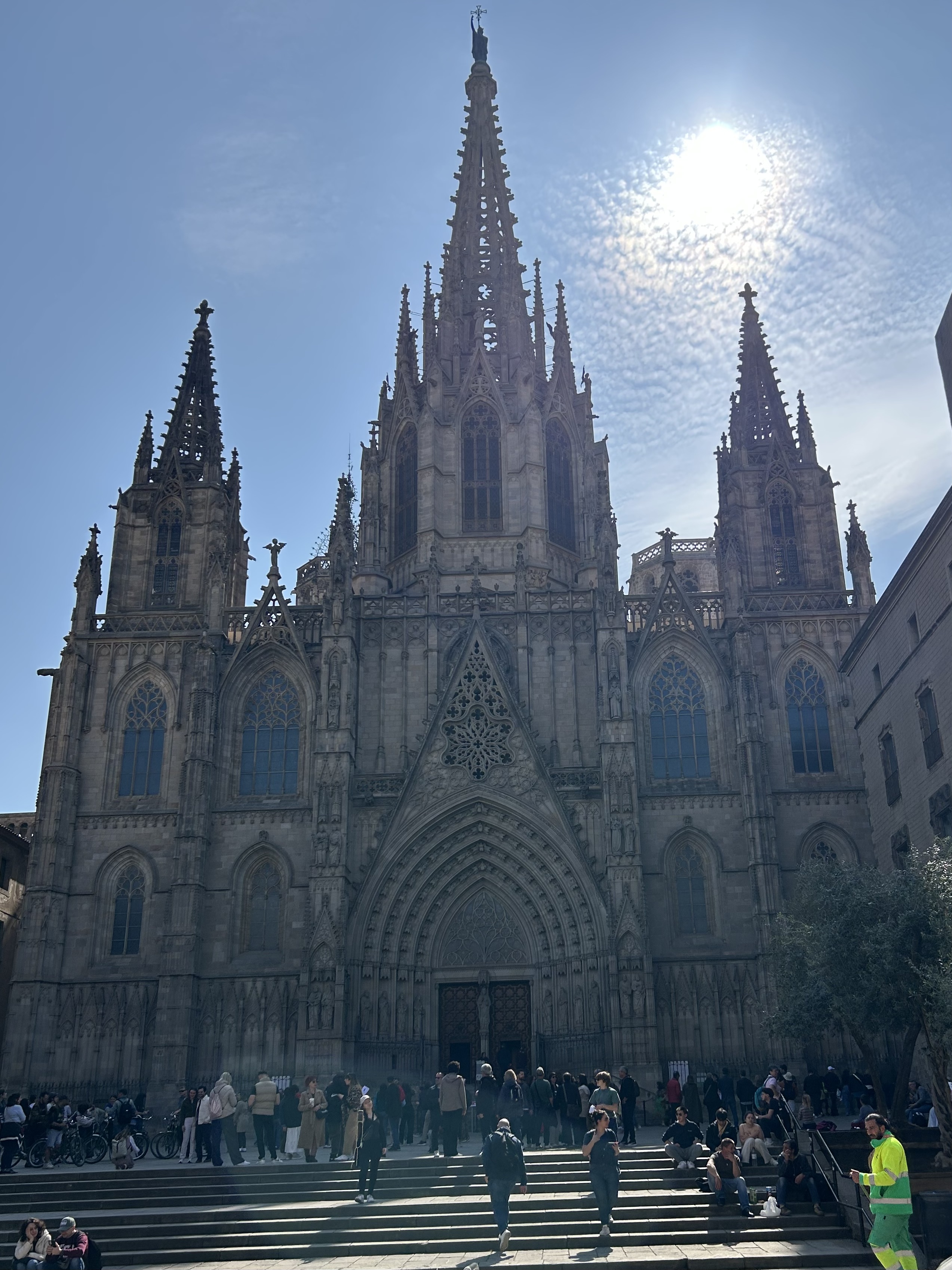
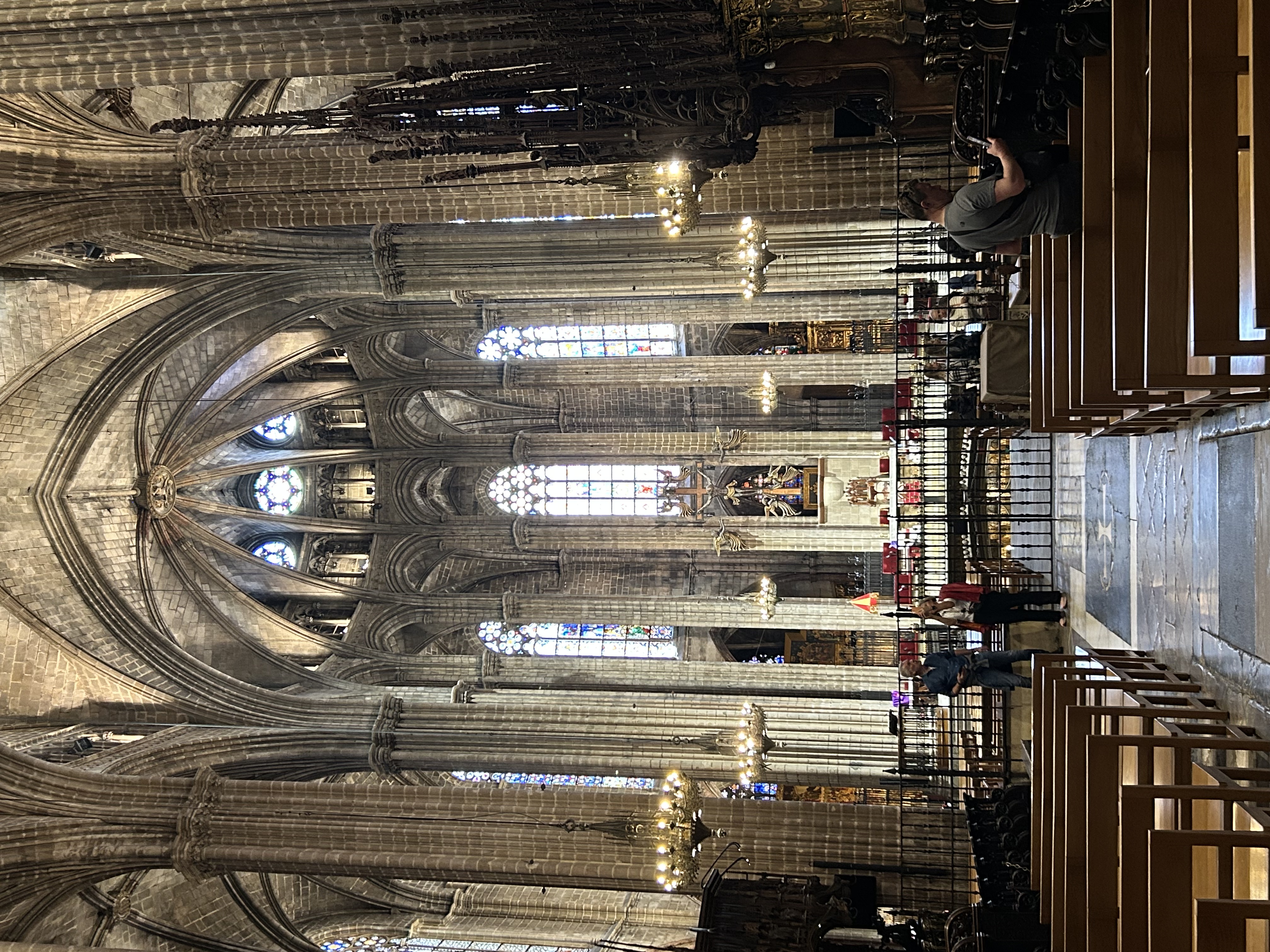


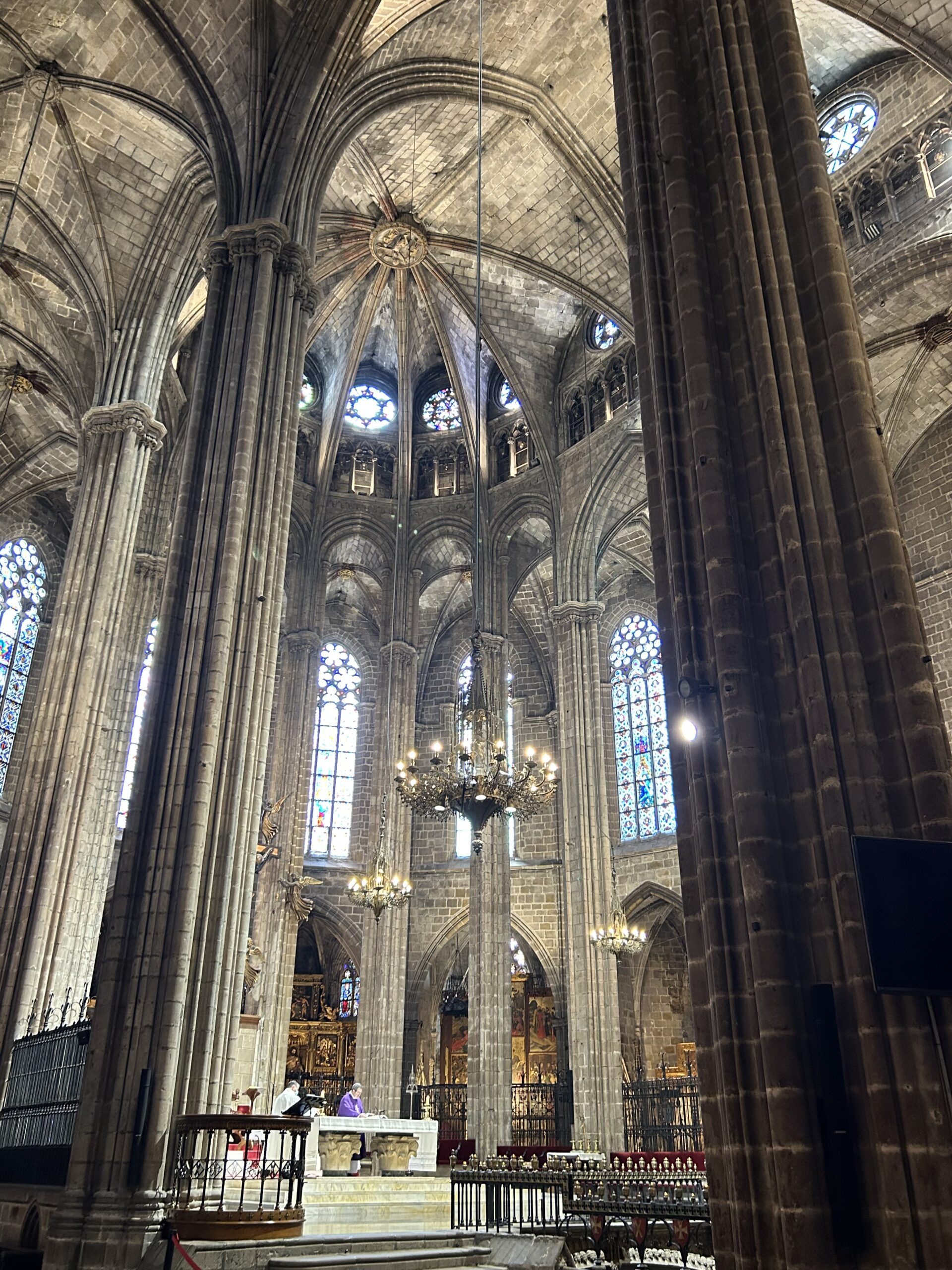
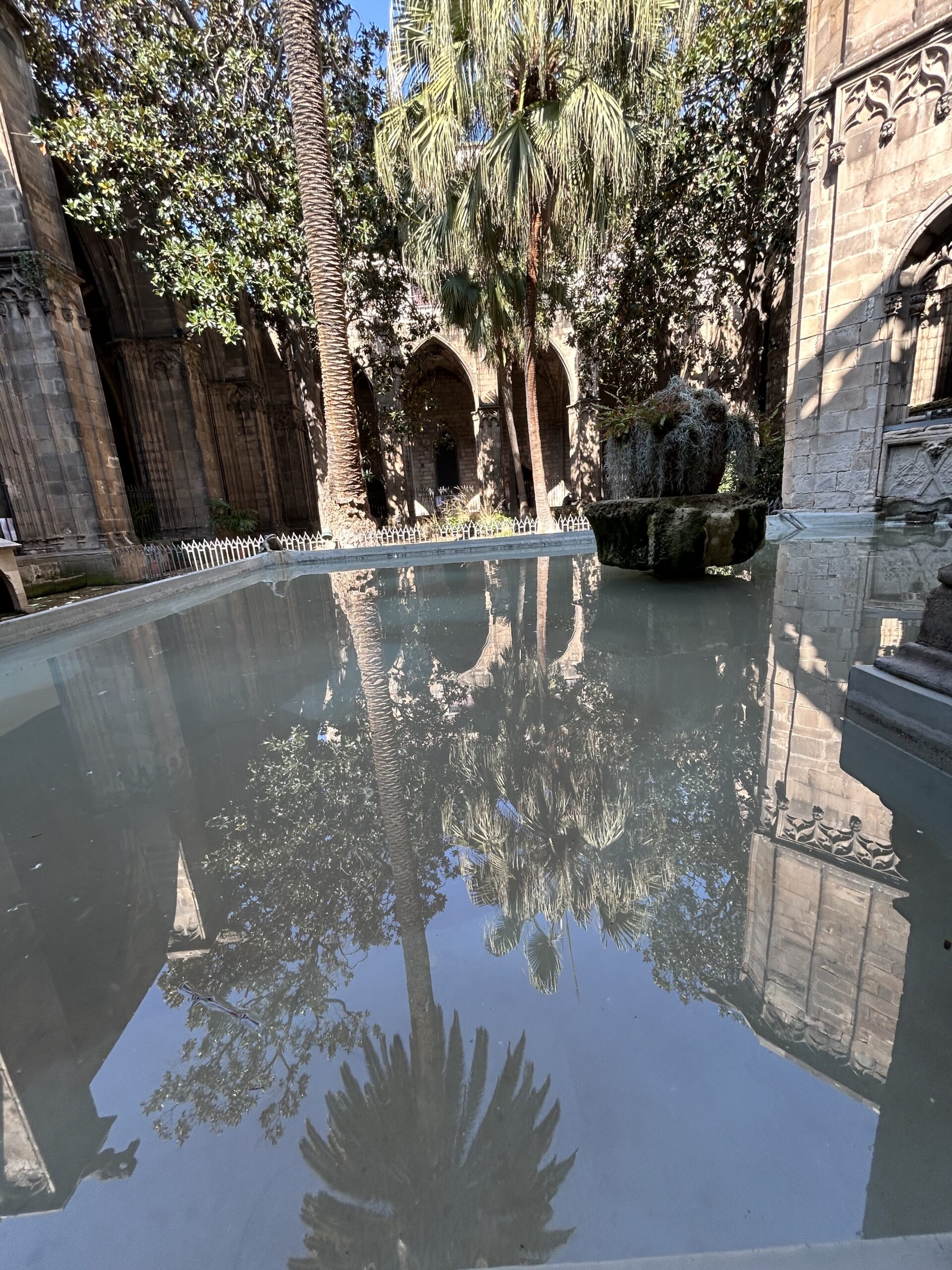
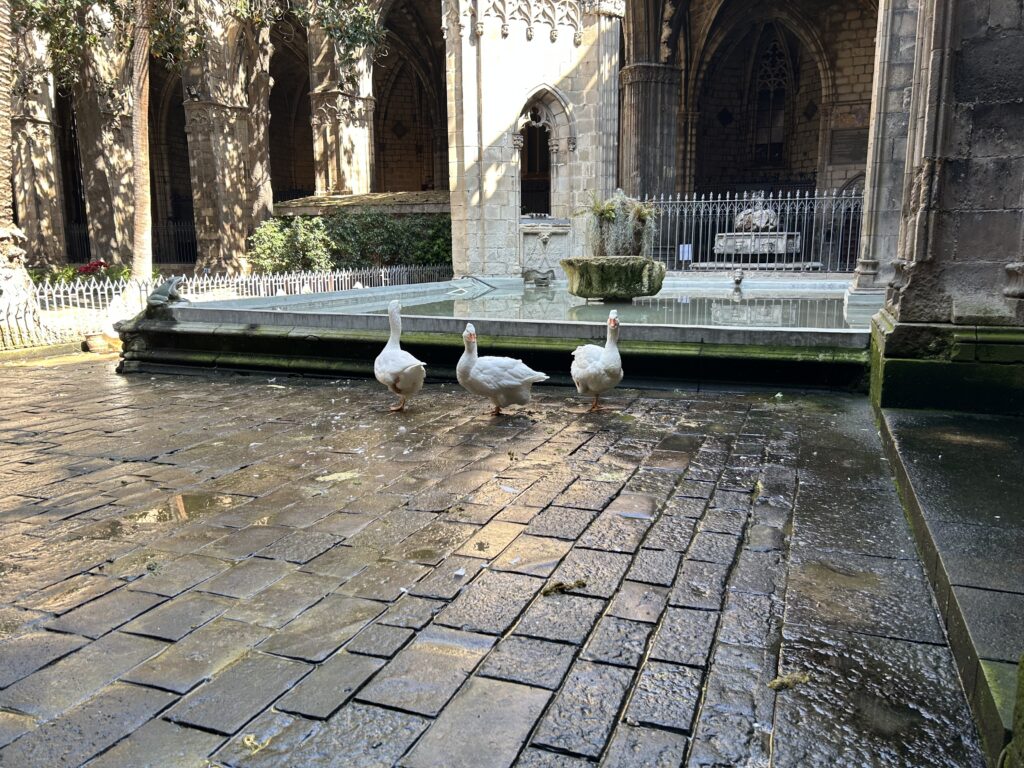
After the Cathedral we wended our way to the Picasso Museum. It is located in an historic building in the Born district of the Old City. Interestingly Picasso himself had a hand in the design of the museum and donated his work to it. It has the world’s greatest collection of his work, more than 4,000 pieces. The work was organized in rooms dedicated the different stages of his development, from his early years through his Cubist work. Some displays included his preliminary sketches, showing how the final piece developed. I was surprised that the Cubist period was so short, since that is what I associate with Picasso. Plan to spend a lot of time here. I was also impressed with the number of school classes that were attending and student taking notes and photographs..
Picasso Museum

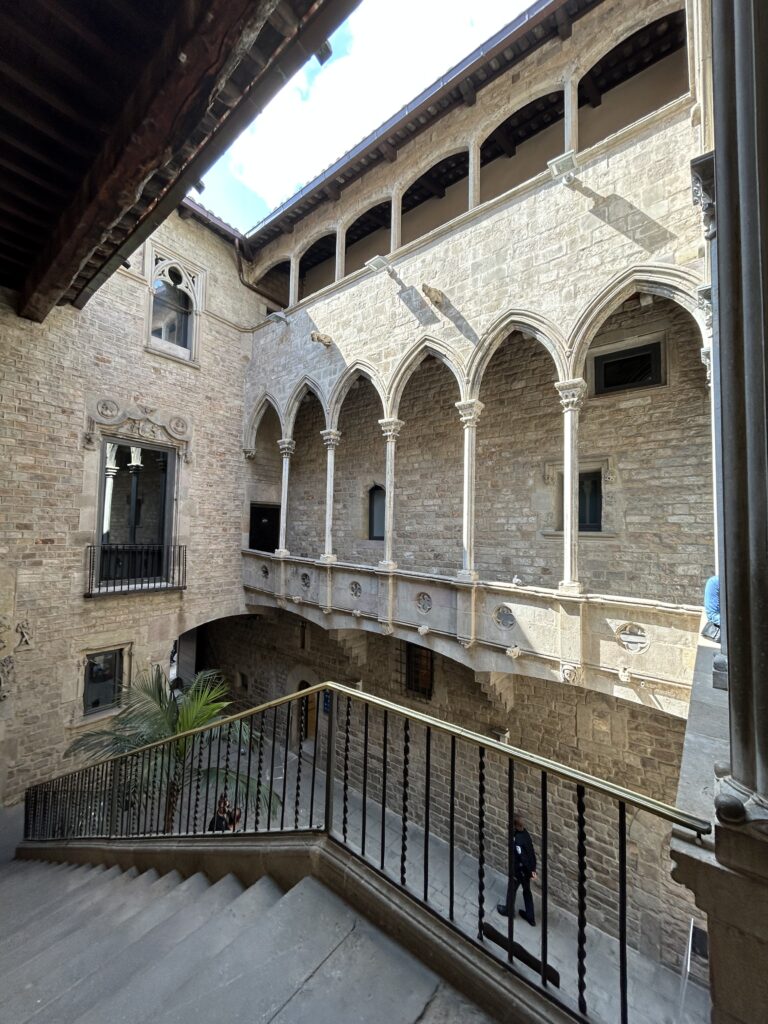
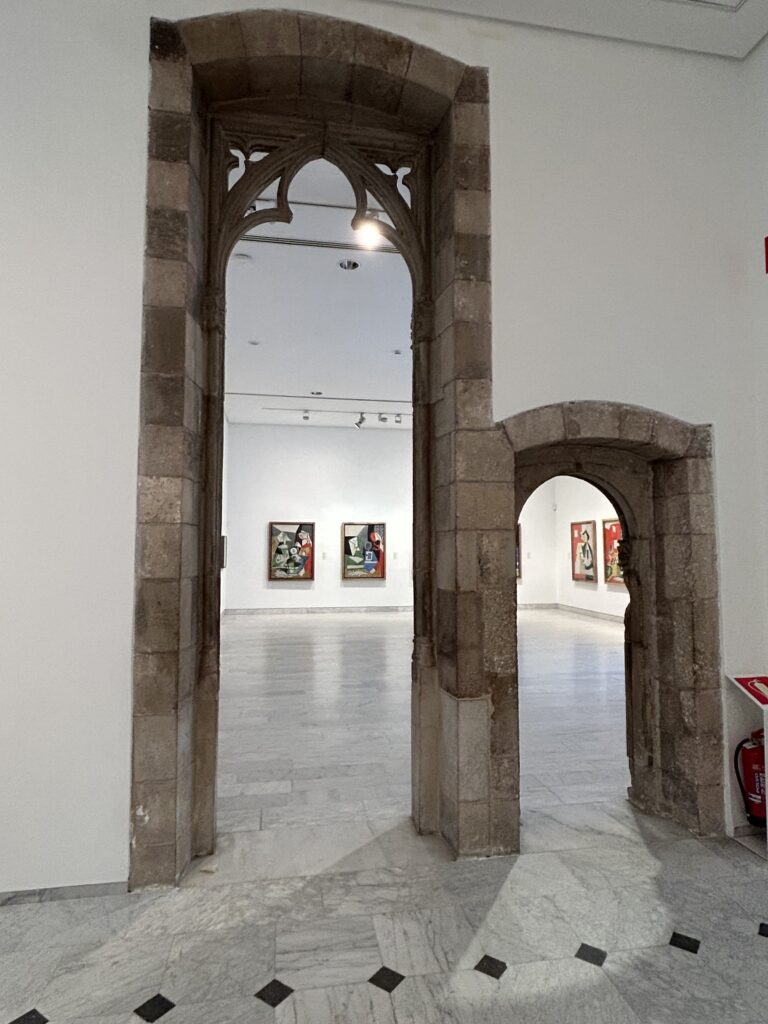
4 Gats
From the museum we found our way to a wonderful restaurant for tapas: 4 Gats. It was recommended to me by a friend, and all the tour guides talked about it. Even the guide at the Picasso Museum told us about it. Picasso created the first menu cover for them. The restaurant was opened on June 12, 1897. The 4Gats became a meeting point for the cultural talent of the time and the ideological center of the artistic avant-garde of Barcelona. These gatherings were attended by a 17-year-old boy, Pablo Picasso, who had his first exhibition at the restaurant and designed its first menu. It was a great place to feel the presence of artists. Also it was a nice conclusion to our visit to the Picasso Museum.

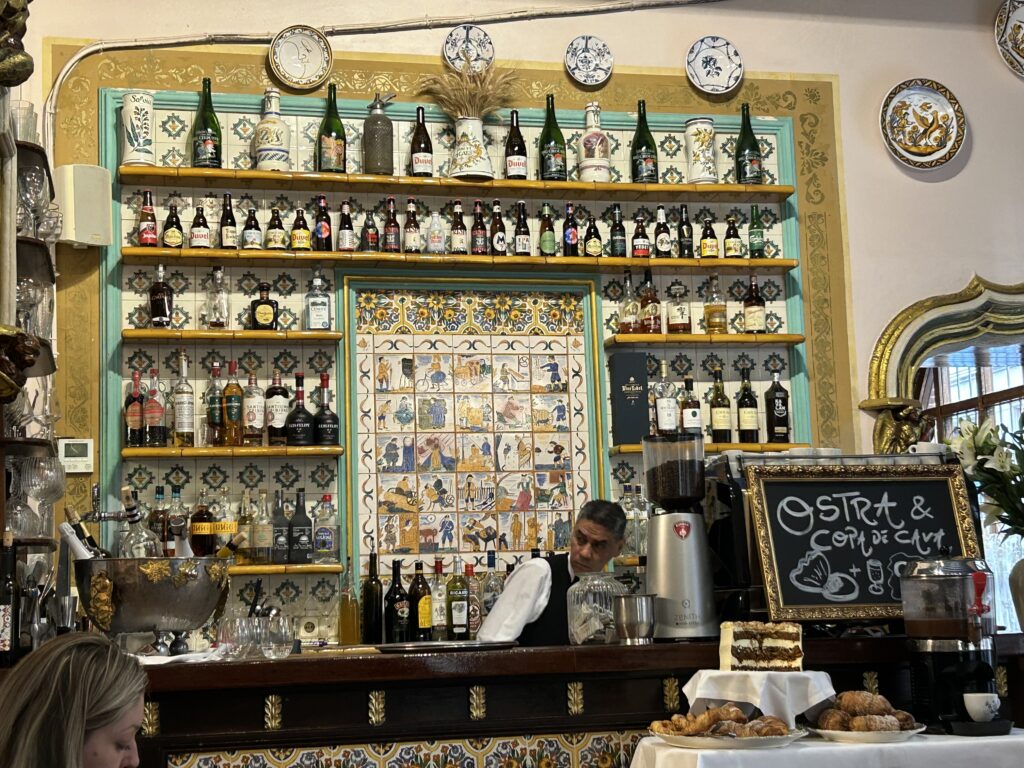

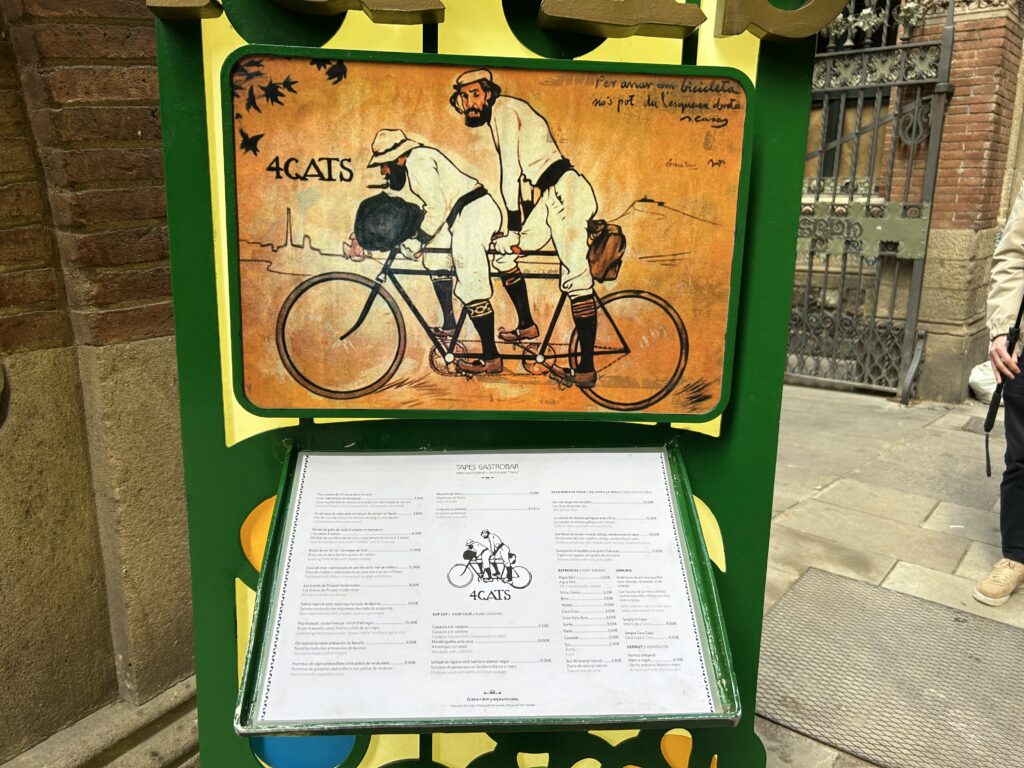
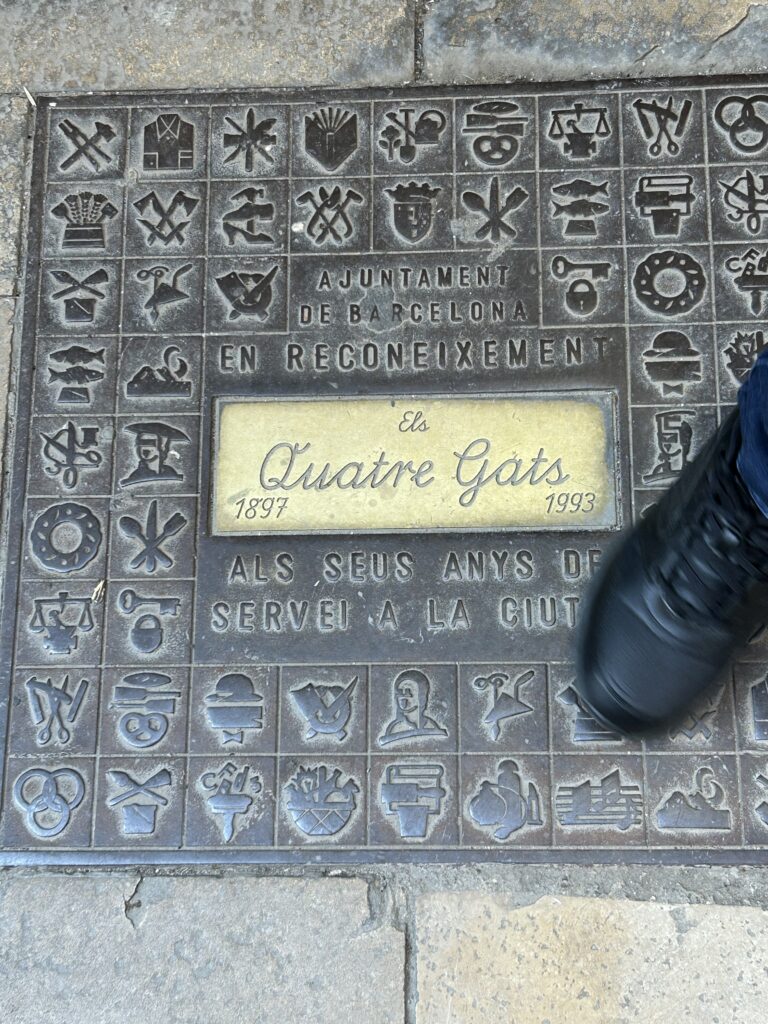
Plaça de Catalunya
Plaça de Catalunya is a large square in central Barcelona. It is considered to be both its city center and the place where the old city and the 19th century city Eixlample meet. It has fountains and statues as well as flocks of pigeons. Several notable sculptures populate the square. Hotels, banks, and shopping centers surround the plaza. King Alfonso XIII opened the plaza in 1927..
We hopped our bus here and walked down the “Pedestrian Street” to the Cathedral and found our way back from 4 Gats on the same street to pick up the bus for our next stop. It was interesting to have such a street in a huge city.
Casa Milá

Close to the Plaça de la Cataluyna is Gaudí’s stately, Casa Mila, the last private residence he designed. It is known for its wavy stone façades and intricate carvings. It has been designated as a National Monument of Interest by the Spanish government and a World Heritage Site by UNESCO. Today it is a cultural center.
Casa Batlló
Close to the plaça in the Eixample district is another building designed by Gaudi, Casa Batlló. The local name of the building is Casa dels ossos (House of Bones) because of the skeletal quality. Its irregular oval windows and flowing sculpted stonework are typical of Gaudi. Much of the façade is covered with colorful mosaics made of broken ceramic tiles. This is another UNESCO site.
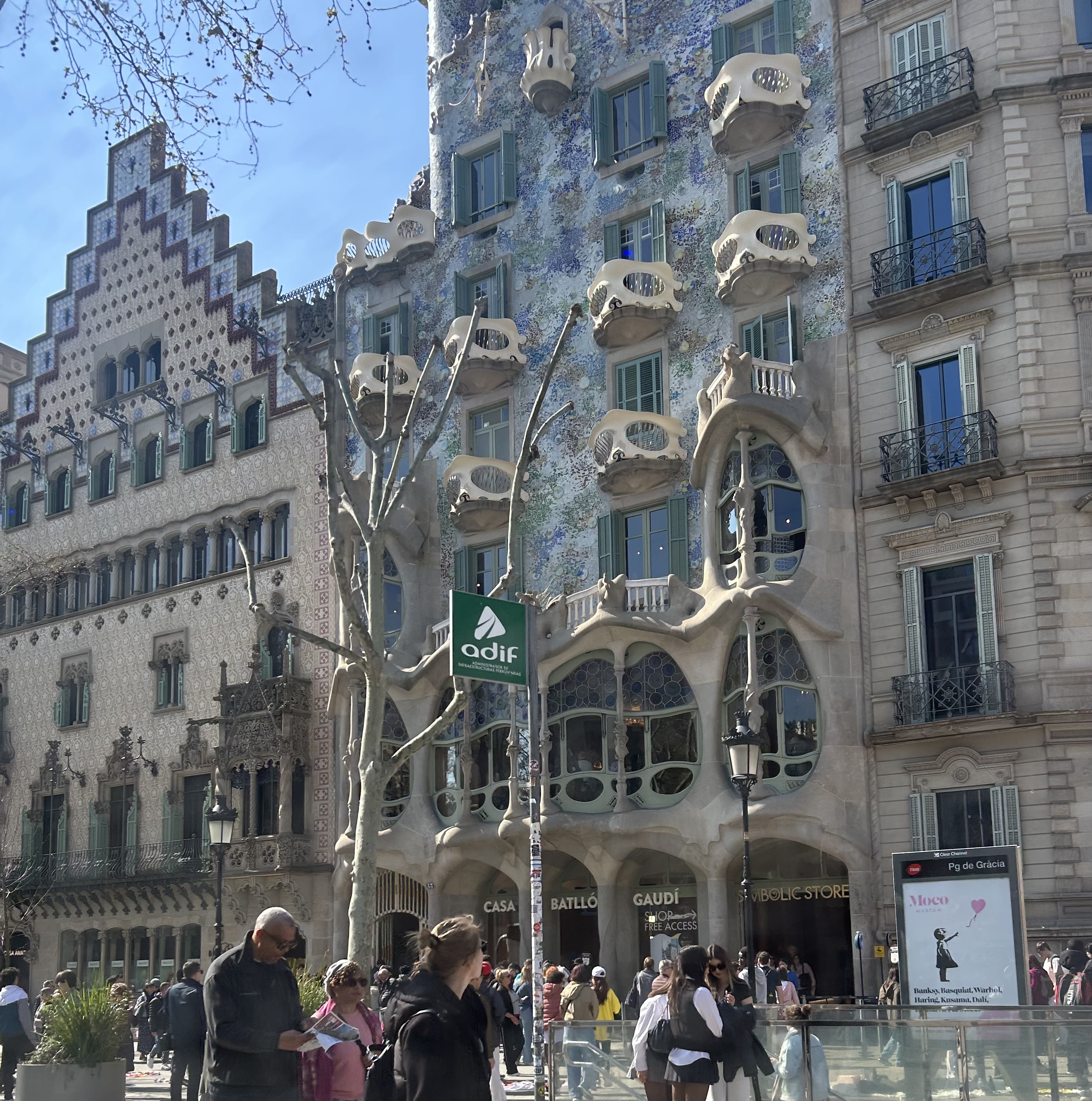
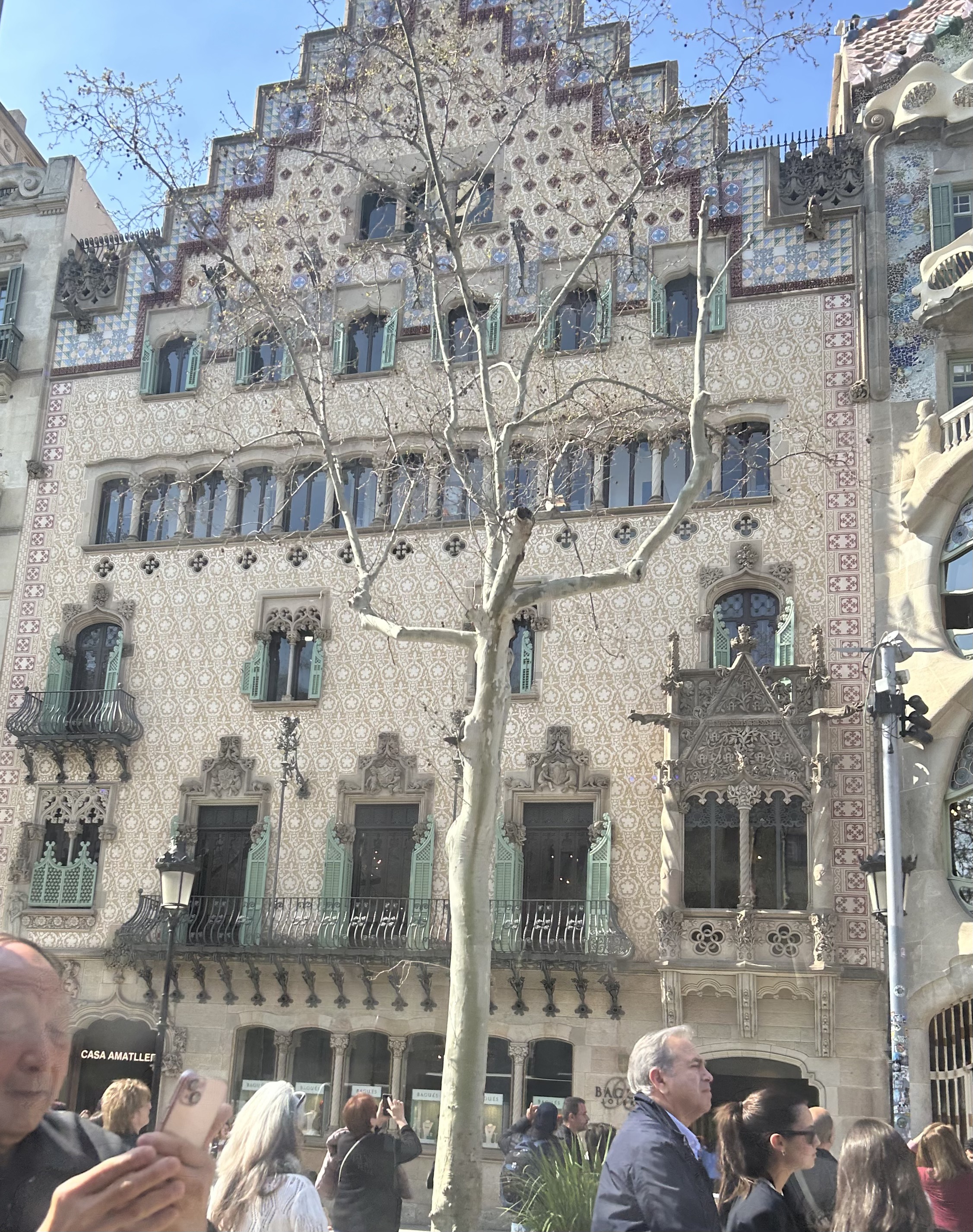
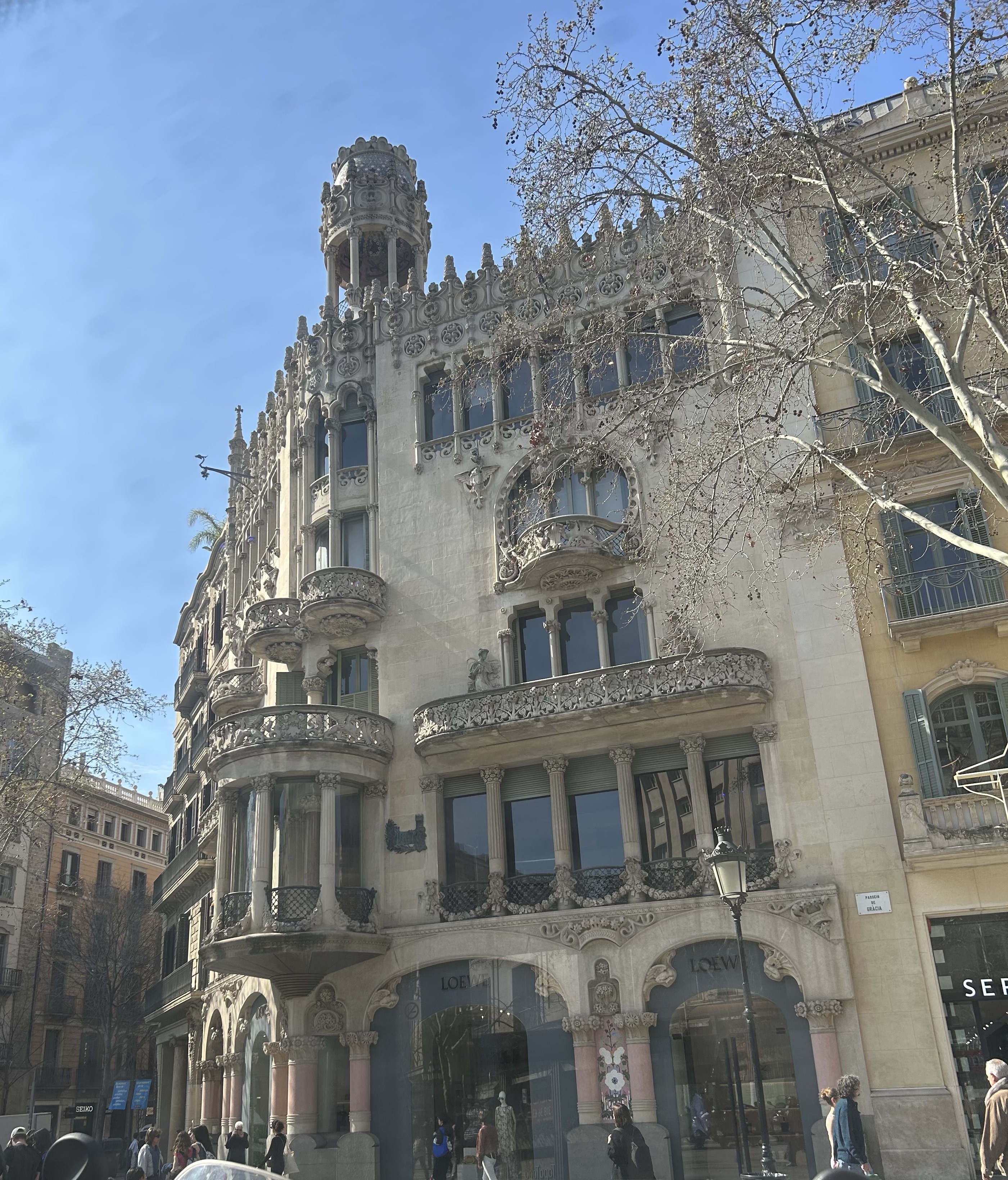
Casa Vicens
Another UNESCO site is Casa Vicens, the first major project by Gaudi. It was built in the Orientalist style between 1883 and 1885. Gaudí used an abundance of ceramic tiling to decorate his work, as well as Moorish arches, columns of exposed brick, and dome-shaped finishes.
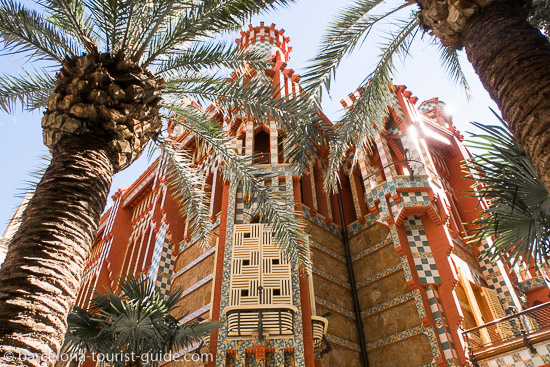
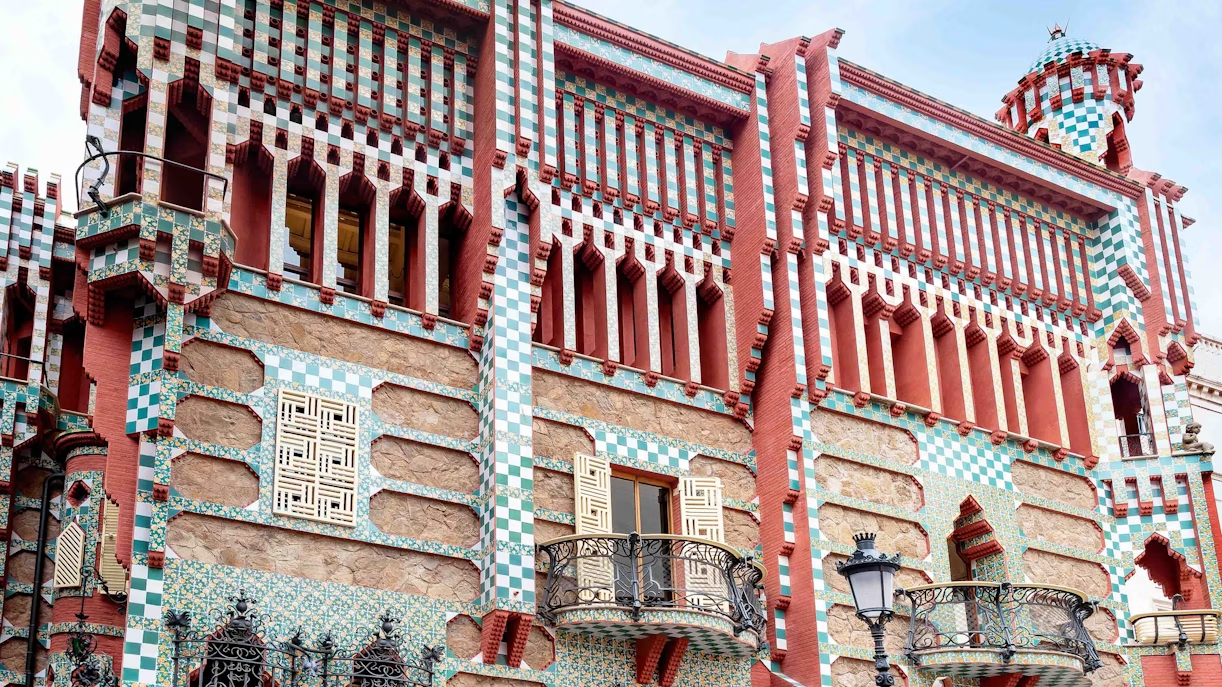
Montjuïc
Sitting on a hill overlooking the city is Montjuïc Castle, a stone structure dating all the way back to the 11th century. The castle started out as a single watchtower that was occupied by a sailor looking out for enemy ships. During the Revolt of Catalonia during the mid-1600s, the government decided to add walls surrounding the watch tower when the threat of invasion from Spanish King Philip IV’s fleet became imminent. Montjuïc Castle ended up defending the city from many attacks, including those carried out during the War of the Spanish Succession. It also served as a prison during the War of the Pyrenees and was occupied by Napoleon’s troops. Today it is a place to visit and learn about Barcelona’s past. Also the view of Barcelona is breath-taking.
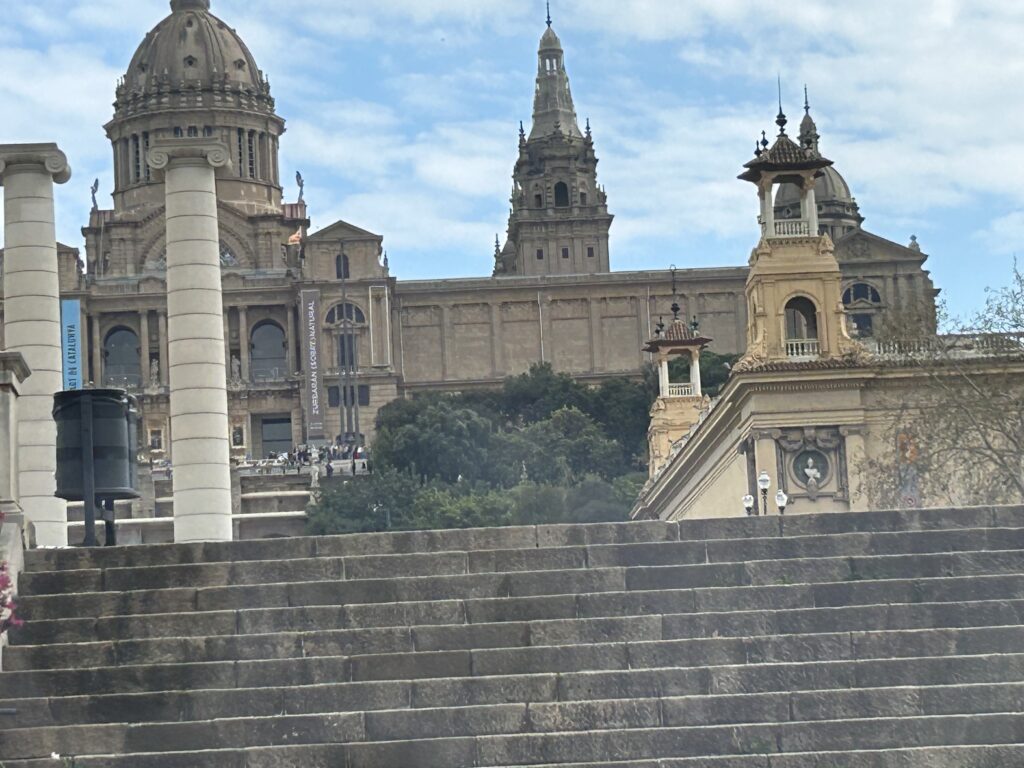
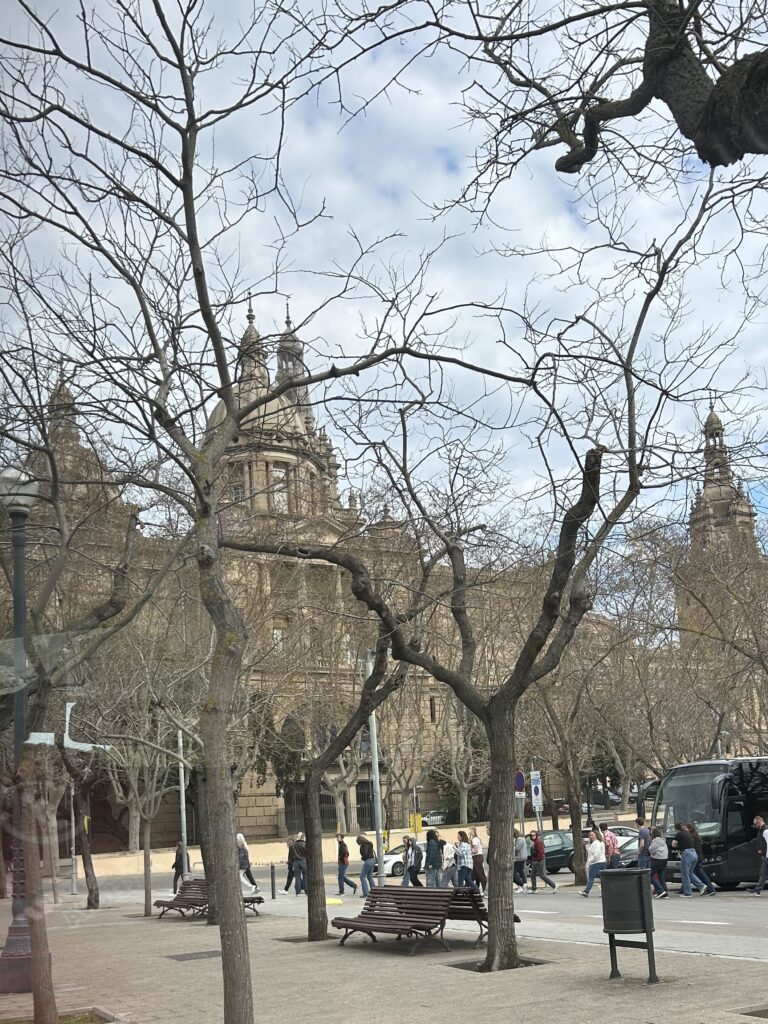
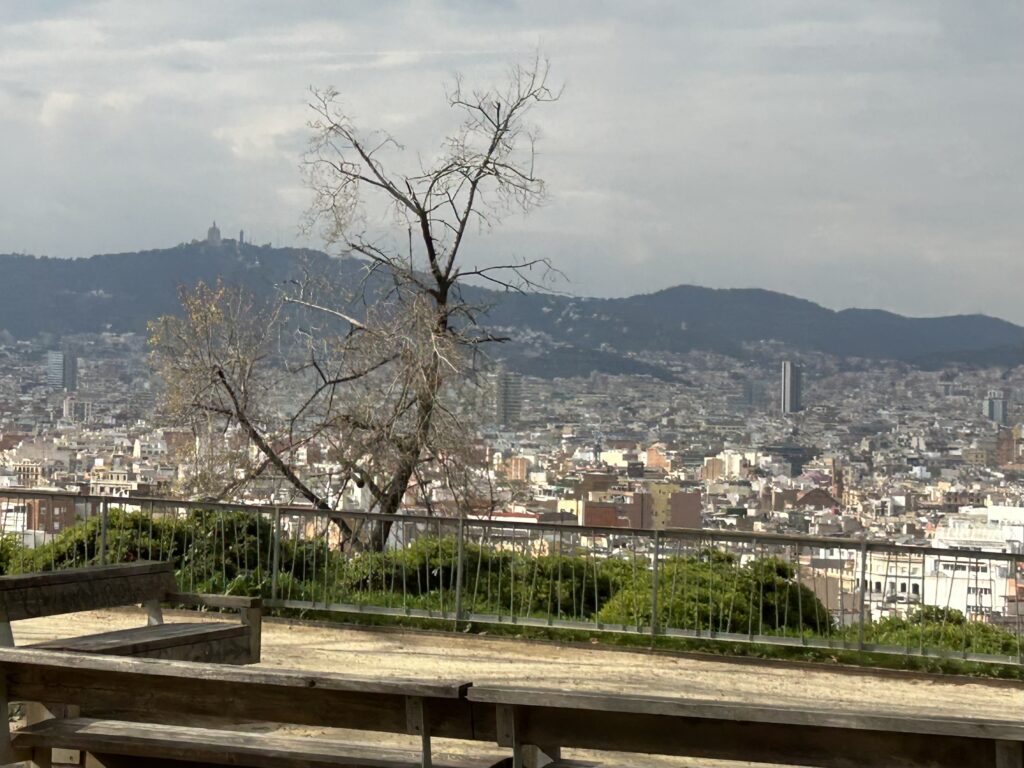
Barcelona is a blend of years of history, many cultures, and impressive art. There is so much to see and do here. It would take many more days than we had to discover all it offers. Contrary to some reports, the people were very friendly, polite, and helpful. If I stood on a corner looking at a map, someone would come up to help. It the cafes people chatted with us. It surpassed my expectations and was a wonderful end to our nearly month adventure.
Leave a Reply